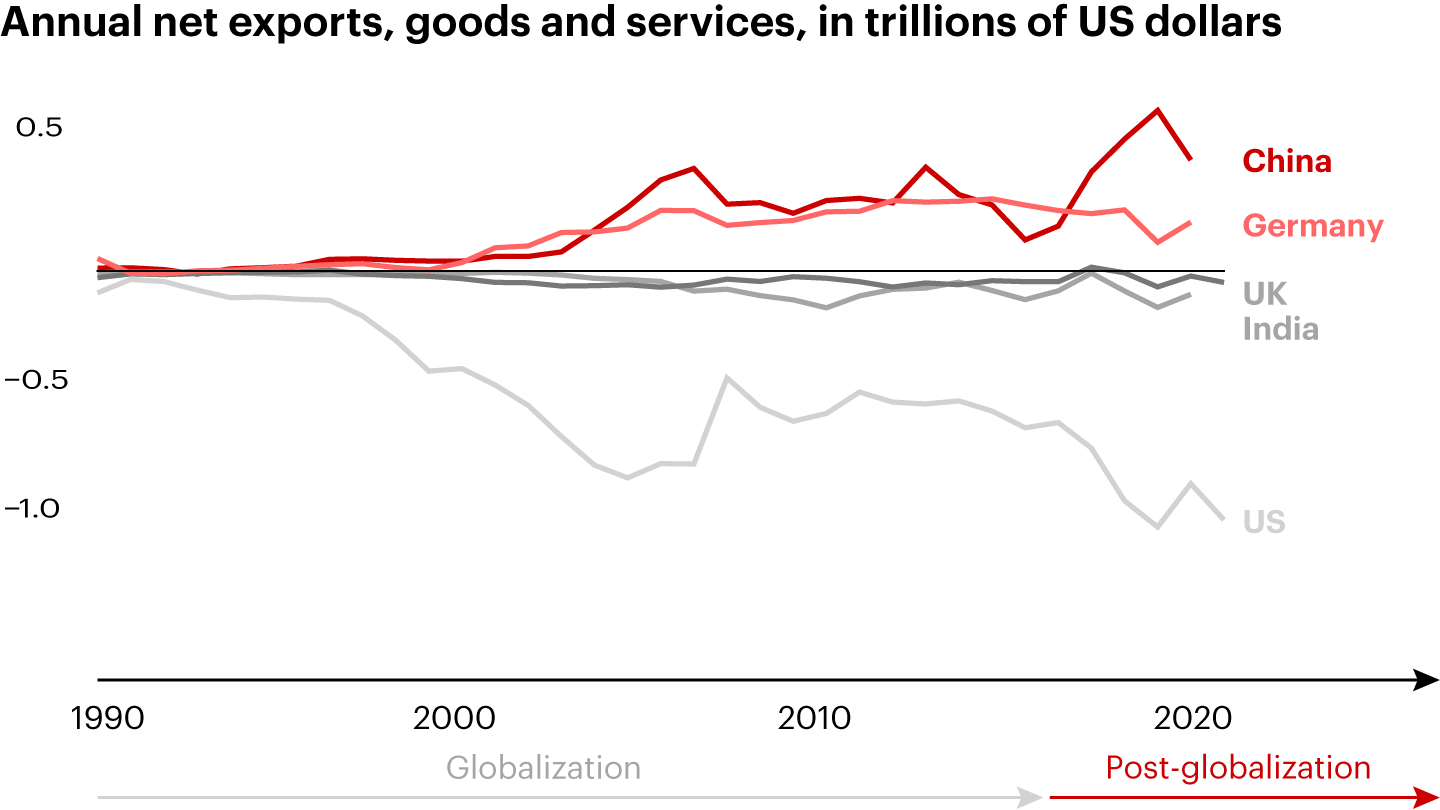Artikel

Auf einen Blick
- Evolving tariff policies are putting new pressure on already-strained utility supply chains.
- Utilities are assessing exposure, recognizing the importance of transparency to decision making.
- Leading firms are proactively managing supplier contracts, weighing the trade-offs of switching to alternative suppliers where possible.
- Taking a proactive approach is an opportunity to build more resilient, data-driven, and nimble supply chains.
For utilities, gone are the late-20th century’s predictable (even boring) days filled with repeatable cycles of power generation, transmission, and distribution build-outs to support new growth and replace retiring assets. The past 25 years have brought constant disruption, with the latest emerging from escalating tariff uncertainty.
Already strained by the Covid-19 pandemic, utility supply chains are feeling new pressure, and executives are recognizing the need to modernize their strategies for a more uncertain future.
Tariff policy implications for utilities
The current US administration views the country’s trade imbalance, which has expanded dramatically since the 1990s, as a threat to the economy and national security (see Figure 1). President Trump’s attempts in his first term to use tariffs to reduce the trade deficit, particularly with China, primarily shifted the source of US trade deficits rather than reduce them, as many companies adopted a “China plus” supply chain strategy. (For more, read the Bain Brief “From China to Trouble?”)


The latest attempt to address the trade imbalance appears to have three main goals:
- Restore US industrial diversity.
- Establish policies that promote balanced and fair trade.
- Strengthen national security.
Regardless of the exact tariff levels, there's no reset to 2024 (or 2015) “normal,” and pressure for a more resilient and localized supply chain is here to stay. The details will undoubtedly vary by country and product, but the overall direction of travel is clear. (Read more in the Bain Brief “Tariffs: The End of the Beginning?”)
With tariffs in place for some countries and looming for others, utilities are starting to assess their tariff exposure by product and country of origin, supplier contract terms and tariff cost-sharing options, and potential changes to their inventory strategies. They’re working to understand the implications of tariffs for existing capital plans, industrial client operations, and customer affordability. The timing and strategy for regulatory engagement are also important considerations.
In a recent experience-sharing conversation with heads of finance and procurement from across the industry, we heard several themes. First, transparency is key to decision making. These leaders are building flexible models to understand their company’s country-of-origin exposure to tariffs by category and to plan accordingly with partners. Some are blending bottom-up supplier dialogue with top-down macro models to triangulate exposure.
Proactive supplier management has become an urgent imperative. As utilities enter simultaneous tariff negotiations across their entire portfolio of materials and equipment, they’re upskilling procurement teams and arming them with collateral, including consistent terminology, scripted questions, and knowledge of tariff codes. Some are expediting shipments of critical goods with limited supply, exploring take-or-pay contracts for the first time, and huddling with in-house legal teams to manage tariffs’ potential implications for force majeure clauses.
Pandemic-driven supply chain diversification is paying off, and those efforts continue. The leaders we spoke to are considering international suppliers while seeking onshore production where possible, yet some expressed worry that a rush to domestic vendors could inflate costs, particularly for capital projects. In some cases, paying the tariff may be the more economical option.
Three keys for utilities executives
Despite uncertainty, utilities can make several no-regrets moves today to weather tariffs:
- Conduct a detailed exposure assessment. Leading companies are mapping direct and indirect tariff risks across their supply chain at a Tier 1 and Tier 2 level where possible. They’re identifying alternative suppliers across categories and assessing their vulnerability to future tariffs.
- Reassess inventory management. The best-prepared companies will stockpile critical assets when justified, weighing increased purchasing costs against the effect on working capital.
- Create a tariff-monitoring war room. Leading firms are building a team responsible for monitoring tariff policies and assessing their implications across the supply chain, tracking suppliers’ tariff-related pricing requests, and coordinating responses across the business.
One thing is clear: Utilities that wait to react to tariffs will be at a disadvantage. The leaders pulling ahead are those treating tariffs not as a one-time disruption but as a structural risk—as well as an opportunity to build more resilient, data-driven, and nimble supply chains. By taking a proactive stance today, utilities can not only weather the current wave of uncertainty but also position themselves to thrive in whatever trade landscape comes next.